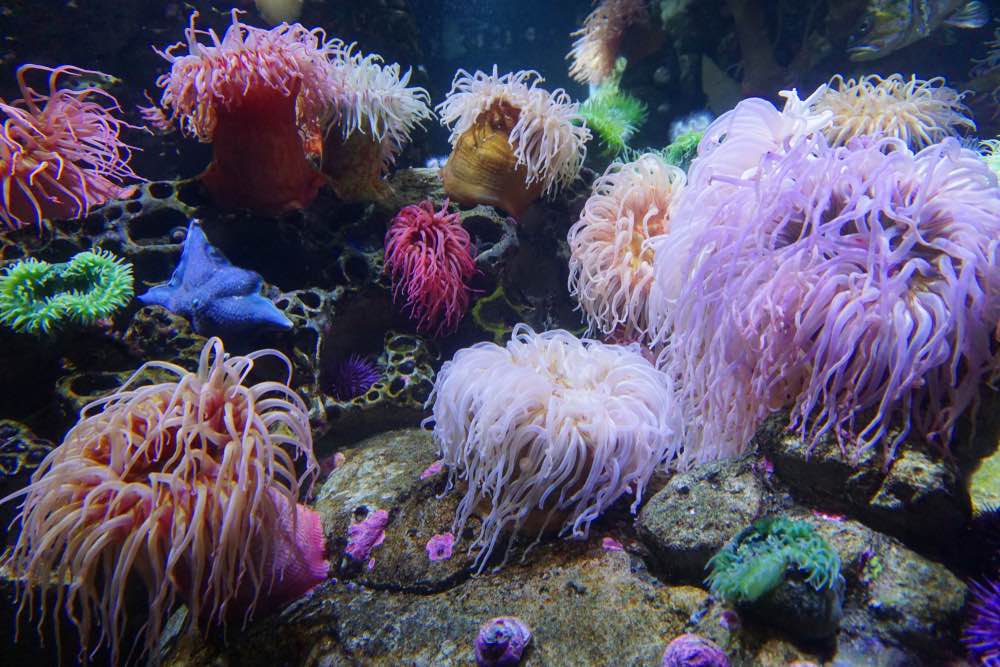Oscar Fish: Vet-Approved Pictures, Size, Care, Tank Setup, & More
Updated on
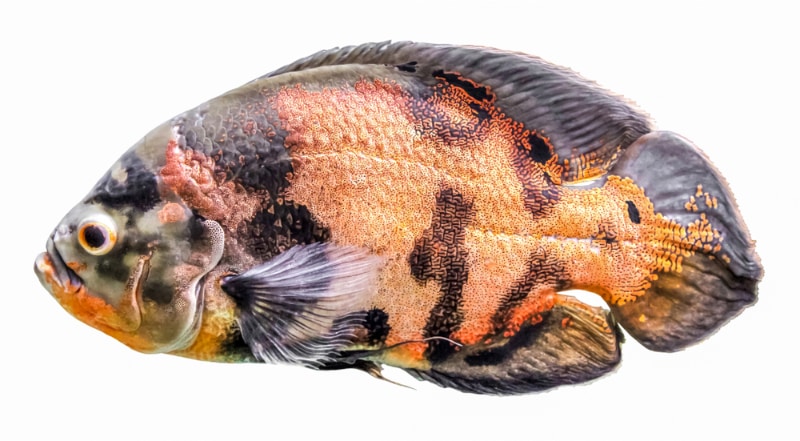
Click to Skip Ahead
Oscars (Astronotus ocellatus), also sometimes referred to as tiger oscars, velvet cichlids, and marble cichlids, are freshwater fish that are widely known for their high intelligence and large size. They make great aquarium pets for fish keepers who have experience with tropical aquariums and raising cichlids. Due to this, most oscars don’t make good starter pets for children or beginners. Caring for oscars can be a lot of work and they require large aquariums even as juveniles.
This article will guide you through raising healthy oscars and how you can create the best home for them to thrive in.
Quick Facts About Oscar Fish
| Species Name: | Astronotus ocellatus |
| Family: | Cichlidae |
| Care Level: | Moderate |
| Temperature: | 22-27 °C (71.6-80.6 °F) |
| Temperament: | Semi-aggressive, territorial |
| Color Form: | Tiger, lutino, blue, black, red, lemon, white, albino, green, among others |
| Lifespan: | 8-10 years (estimation) |
| Size: | 13-14 inches (35 centimeters) on average |
| Diet: | Omnivore, but have carnivore preference |
| Minimum Tank Size: | 75 gallons |
| Tank Set-Up: | Heated, spacious, freshwater |
| Compatibility: | Poor |
Please note that there is no scientific research that has accurately determined the potential lifespan of this fish, and all information regarding their lifespan is considered an educated guess only.1
Oscar Fish Overview
Oscars are a type of freshwater cichlid that was first described in the 1800s. They are native to South American countries like Peru, Brazil, Paraguay, and Colombia. They inhabit the Amazon and Orinoco River Basins and drainage systems, preferring warm and slow-moving muddy waters. They are freshwater fish that cannot survive in marine environments.
Many oscar fish keepers are surprised at how intelligent and playful these fish are, which has increased their popularity as pets. However, oscars are semi-aggressive and highly territorial, so they don’t tolerate living with other fish. They are especially aggressive when they are spawning.
You usually find oscars housed alone in large aquariums with few decorations and live plants. Alternatively, spawning pairs are sometimes housed together. In the wild, oscar fish aren’t very tolerant of cold waters. Their lower lethal limit for tolerance of temperature is 12.9 °C (55.22 °F), however, they develop many health issues and illnesses well before this limit is reached (this is, after all, the endpoint of their tolerance).
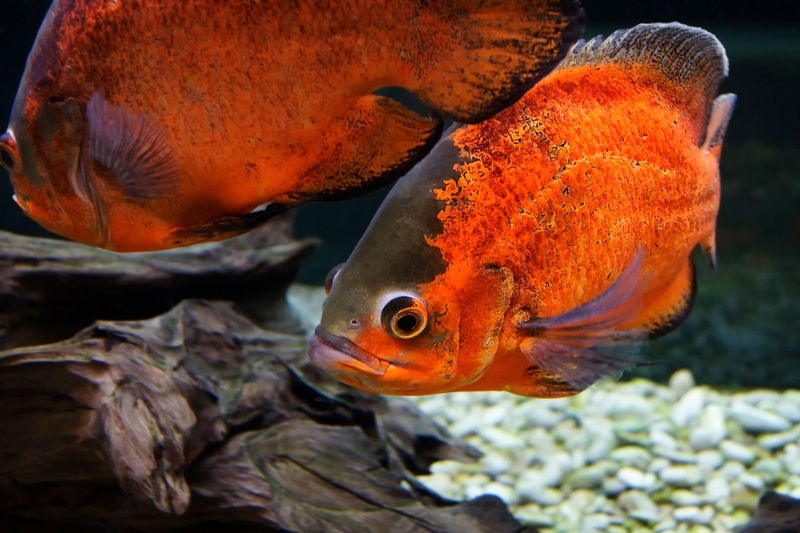
How Much Do Oscar Fish Cost?
The price of an oscar fish can vary depending on their color, form, size, and age. The average price for juvenile oscars is around $18 to $50, whereas adults can be priced from $60 to $250. The rarer color forms of oscars like the lemon and green are usually higher in price and rare to find in most pet stores. So far, the tiger oscar seems to be the most popular and affordable variety to purchase as a juvenile.
Typical Behavior & Temperament
Oscars are regarded as intelligent, aggressive, and sometimes playful fish. However, they can be highly territorial and prefer to live alone. This can be confusing for first-time owners, as juveniles are often housed together in pet stores. This is possible because their territorial drive sets in when they are around a year old. At this age, they tend to pair off, and a pair that has bonded begins to look for territory to lay their eggs. This results in squabbles and fights with other fish (including other oscars).
Some fascinating behavior you might notice from your oscar fish in an aquarium is that they like to rearrange and upturn décor and plants. This can make it tricky to decorate an oscar’s tank, and most keepers resort to only providing their oscar with a substrate, large rocks, and driftwood. Most oscars swim around the middle and bottom parts of the aquarium.
Although oscars aren’t overly active fish, it’s unusual for them to become inactive or bottom-sit. These types of behaviors may be caused by stress or disease which requires treatment.

Appearance & Varieties
Oscars are medium to large-sized fish that can reach an adult size of 13-14 inches (35 centimeters) on average when kept as pets. Like many other fish, pet oscars grow much larger than wild oscars, mainly because they have a constant supply of food and no threats of predation. In the wild, food is scarce, and a large fish may prove tempting for a predator.
Several varieties of oscars can be found with different fin and body shapes. Oscars are also available in different color forms and patterns. Regardless, all oscars have large fins and while most oscars have a single proportionate caudal fin, some have been bred to have extra long fins.
- Tiger: A bicolored oscar with a black body and orange markings. This is perhaps one of the most popular oscar fish varieties.
- Lemon: A rare and brightly colored yellow oscar.
- Green: A faded green coloration usually mixed with yellow.
- Black and white: Oscars can have both black and white colors typically mixed with colors like red and orange.
- Veiltail: These oscars have been bred to have long and flowing fins like the betta fish.
- Red: Usually mixed with other colors like black and orange.
- Albino: A white and reddish-orange variation.
- Lutino: Often confused as an albino variation with a marbled pattern.
- Blue: This color can vary in intensity and is sometimes combined with an orange-marbled pattern.
How to Take Care of Oscar Fish
Habitat, Tank Conditions, & Setup
Since oscars can grow very big, they require a very large tank. Most juvenile oscars require a minimum tank size of 75 gallons and a much larger one as an adult. One adult oscar usually needs a 120- to 150-gallon tank. Due to their size and rapid growth, you cannot keep oscars in bowls or other small aquariums. You also want to ensure that they have enough swimming space and that the tank is not cluttered with too much décor. Oscars have amazing athletic abilities and can easily jump, so a secure lid is necessary for these fish.
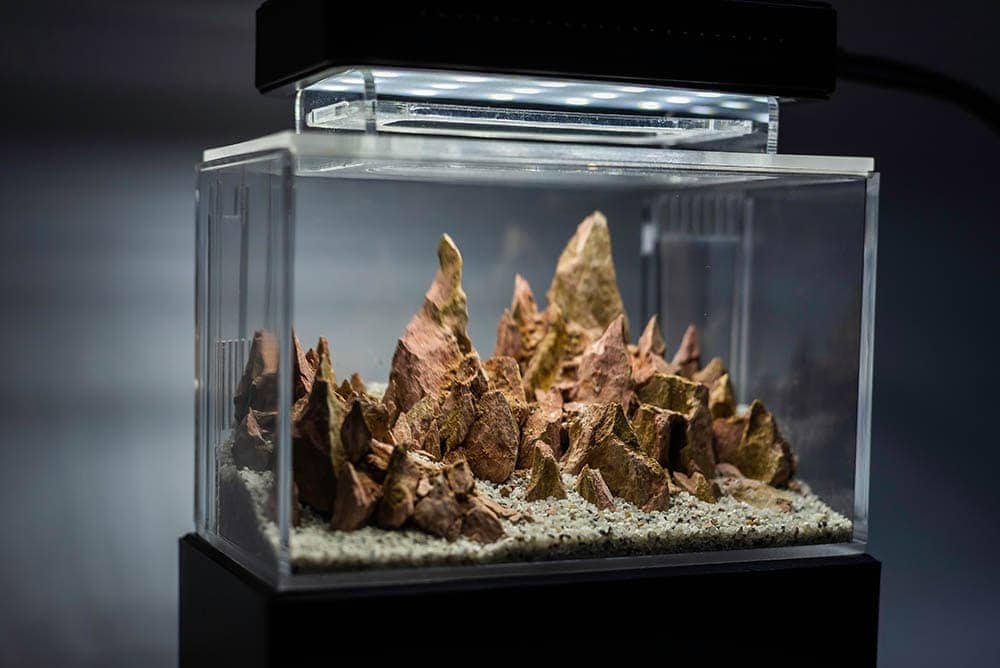
Water Quality & Conditions
All oscars are tropical and freshwater fish. Their aquarium needs to be heated to around 22-27 °C (71.6-80.6 °F). Drastic temperature changes can be stressful for oscars, so a heated one is usually necessary even if the ambient room temperature is warm. A stable and neutral pH between 6.4-7.5 is ideal for Oscars, and the pH shouldn’t be adjusted too much since it can be stressful for your fish.
Like most aquarium fish, oscars should have good water quality with no traces of ammonia and nitrite. You can use an aquarium water testing kit to find out how much ammonia, nitrite, and nitrate is in your oscar’s tank.
Substrate
Even though oscars aren’t picky about their substrate, a smooth gravel or sandy substrate is recommended. Pebbles are also acceptable. You want to avoid using substrates that alter the pH of the aquarium, which is common for some growing substrates for live plants.
Do note that oscars have a knack for redecorating their home, so you may find that your pet creates “peaks and valleys” in their substrate (to their liking). For this reason, sharp substrate isn’t recommended, as it may cause injuries to their mouth and oral cavity when picked up.
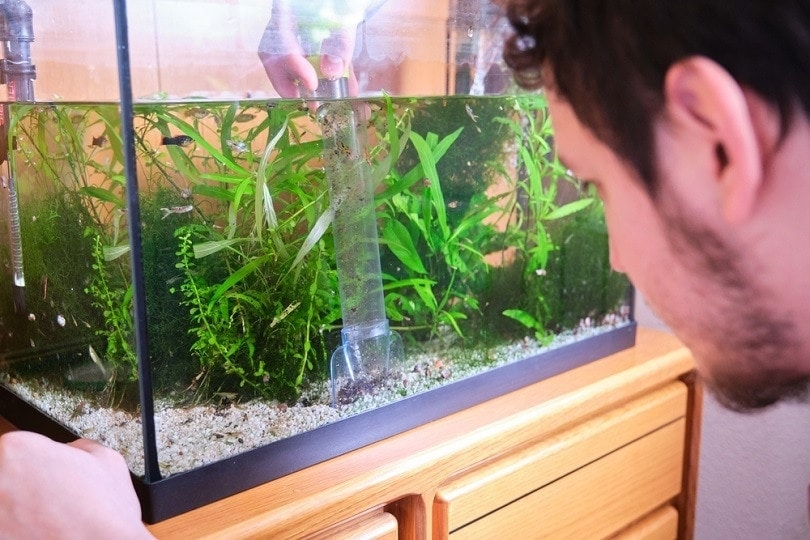
Plants
Keeping live or fake plants in your oscar’s tank is optional since oscars can be destructive in their aquarium. Some oscar keepers prefer to glue fake plants to rocks and driftwood, rather than have their Oscar uproot and damage live plants. However, live aquarium plants can be beneficial since they offer shelter and can help maintain good water quality. In some cases, the oscars may also try to eat the plants.
Lighting
If your oscar’s tank isn’t getting enough natural lighting, you can use a mildly bright aquarium light instead. This light can run during the day for around 6 to 10 hours, but it should be turned off during the night. Keeping your oscar’s tank lit during the day is also important if you have any live plants in the tank.

Filtration
Running a good filter on your oscar’s tank is important. This will ensure the water will not become stagnant or dirty. Due to the size of most oscar fish tanks, you usually need a very strong and large filtration system to filter the water effectively. It’s recommended to allow the tank and filter media to undergo the nitrogen cycle. Once this cycle is complete, the filter will be able to process your oscar’s waste. Oscars can also be messy eaters, so a filter will help prevent the water from becoming cloudy and dirty after feeding time.
Are Oscar Fish Good Tank Mates?
Oscars generally do not make good tank mates because of their territorial and aggressive temperament. Most oscar fish will do fine if housed alone, especially as adults. They do not become bored or crave companionship from each other. They also make poor tank mates for many other fish and will often harass or eat smaller fish.
However, you might be able to create an ideal environment where oscars can be kept with tank mates like silver dollars or jack dempseys. If you are already an experienced oscar fish keeper and plan to add tank mates, ensure that the conditions are ideal for both species and that the tank is large enough. You want to avoid keeping small fish in the same tank as oscars because they will chase and even eat these fish. If you have a veil tail oscar , tank mates that are known to be fin nippers are not a good choice.
Do note that oscars may become very aggressive when they are spawning. Oscars care for their young, and a spawning pair will keep watch over their young for up to a year. During this time, they will not tolerate any fish near their eggs or young, even fish that they previously got along with.
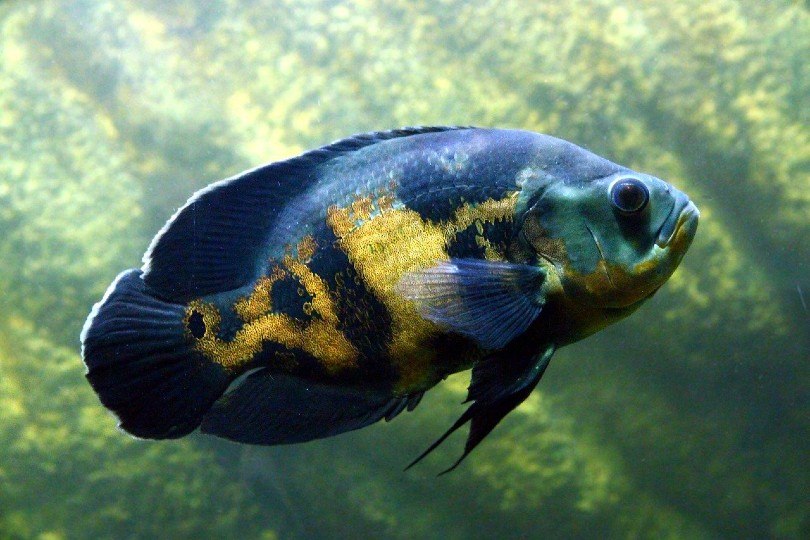
What to Feed Your Oscar Fish
Oscars are omnivores but they have a carnivore preference. In the wild, Oscar fish consume small live foods like fish, crustaceans, worms, and insects. They don’t usually eat plant-based foods in the wild unless they have no other option. However, at times when prey is scarce, they are able to sustain themselves on plant-based matter. They return to their carnivorous style whenever prey becomes available again.
To ensure that your oscar is receiving the nutrients they need to stay healthy, they should be fed a species-appropriate food, along with supplements (if necessary). Foods include live foods like shrimp, fish, earthworms, and insects like crickets. These should ideally be raised in another aquarium to ensure that they are healthy and parasite and disease free.
You can find species-specific oscar fish foods at most pet stores that stock these fish, and the size of the food will vary in size according to an oscar fish’s life stage. Adult oscars generally can be maintained with a high-quality pellet. A high protein diet is especially important for young oscars since they need these nutrients to grow properly.
Keeping Your Oscar Fish Healthy
With proper care, it is assumed that most oscar fish can live for up to 10 years. Below are some tips that you can use to ensure that your oscar is kept healthy in your care.
- All oscars require a large tank with plenty of room to swim. Small tanks that don’t offer your oscars much space to swim comfortably, especially once they are fully grown. Always aim to provide your oscar fish with the largest tank you can afford. If you have limited space for a large fish tank, oscars aren’t going to be the right choice for you.
- As tropical fish, your oscar will thrive best in a heated aquarium. A thermometer should be used alongside an aquarium heater to keep the water at a comfortable temperature. The aquarium water should be kept at a consistent temperature with few fluctuations.
- Aside from providing your oscar with a well-maintained aquarium, these fish also require a healthy and balanced diet to thrive. This means that a pellet or gel food is recommended for these fish, and supplements will add variety to their diet while being nutritious.
- Our last tip is to only keep oscars with compatible tank mates. Housing oscars together or with other fish can be a lot of work, even for experienced fish keepers. It’s better to house your oscar fish alone or in bonded groups rather than cause unnecessary stress by keeping them with other fish.
Breeding
It can be difficult to breed oscars cars in captivity, and it can take a lot of trial and error before you can successfully breed them. Oscar fish are monomorphic, so both the males and females have an almost identical appearance. This means that venting your oscar is going to be the most accurate way to determine their sex. Like with most cichlids, the male will have two similar-sized openings. Whereas the females will have one hole larger than the other.
If you do plan to breed your oscars, you have a better chance of breeding a male and female pair that has bonded. Another method is to house a few juveniles together and watch them pair off as they mature. This does, however, involve rehoming the juveniles that aren’t part of your breeding pair.
Female oscars can lay hundreds of eggs at a time, which both parents become incredibly protective over. These eggs will turn a brownish color once they have been fertilized. After around 3 days, any viable eggs will begin to hatch. Oscars care for their eggs and young and, therefore, shouldn’t be removed from the aquarium when they are spawning.
Conclusion
Owning and caring for an oscar fish can take more time and effort than other cichlids or aquarium fish. They require large tanks that not everyone has the space to provide. They also make poor tank mates and cannot be kept in community aquariums, so you are limited to the types and number of fish you can keep with oscars.
Another factor to consider before getting an oscar is whether you will be able to potentially give up on having an aesthetically pleasing aquarium. Many adult oscars will rearrange their tanks, leaving plants uprooted and décor upturned. Aside from this, oscars make great pet fish for large tropical aquariums.
Their high intelligence and excellent memory make them rewarding to look after and provide fish keepers with plenty of entertainment.
Featured Image Credit: Nosyrevy, Shutterstock






